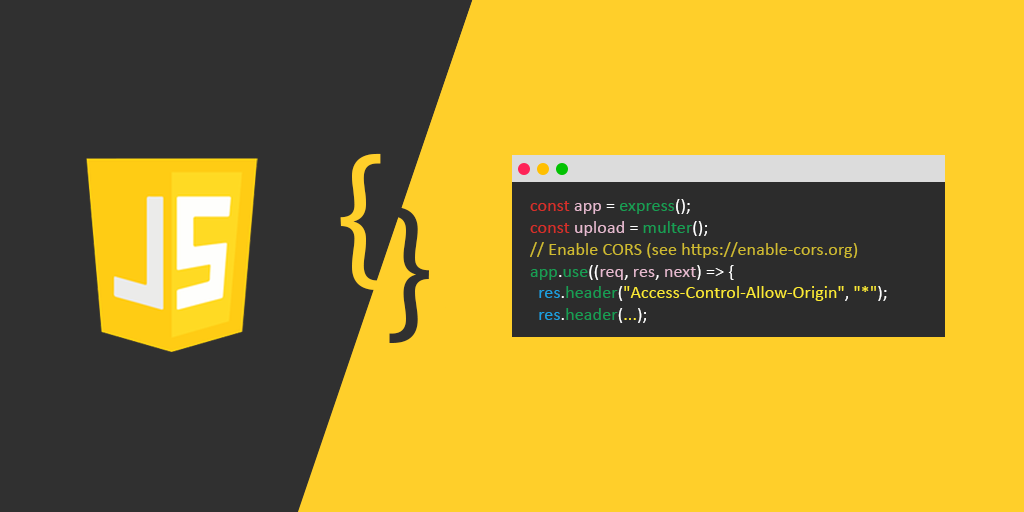Exploring Modern JavaScript Features
 Ramin SMK
Ramin SMK
Welcome to the exciting world of modern JavaScript features! In this article, we will delve into the latest advancements in JavaScript, exploring the cutting-edge techniques and capabilities that can revolutionize your web development projects. With the ever-evolving landscape of web technologies, staying up-to-date with the latest JavaScript features is crucial to creating high-performing and user-friendly websites.
Benefits of using modern JavaScript features
Using modern JavaScript features in your code comes with a multitude of benefits. Let's explore some of the key advantages that these features bring to the table.
Improved Code Readability and Maintainability
One of the major benefits of modern JavaScript features is improved code readability and maintainability. Features like arrow functions and template literals allow for more concise and expressive code, making it easier to understand and debug.
For example, consider the difference between a traditional function and an arrow function:
// Traditional function
function add(a, b) {
return a + b;
}
// Arrow function
const add = (a, b) => a + b;
Arrow functions are not only shorter but also provide a more elegant way to express simple operations. Additionally, the use of destructuring assignments and spread syntax simplifies complex data manipulation, reducing the chances of errors and making the codebase more maintainable.
Increased Developer Productivity
Another advantage of modern JavaScript features is increased developer productivity. By leveraging features like async/await and optional chaining, developers can write cleaner and more efficient code.
Async/Await: Async/await provides a more intuitive way to write asynchronous code, eliminating the need for complex callback structures or promise chains. It allows you to write asynchronous operations in a synchronous-like manner, greatly enhancing code readability and making maintenance a breeze.
Optional Chaining: With optional chaining, you can safely access nested properties without the risk of encountering null or undefined values, reducing the need for defensive coding. Here's an example:
// Without optional chaining
const city = user.address && user.address.city;
// With optional chaining
const city = user?.address?.city;
By embracing these features, developers can complete tasks more efficiently, leaving more time for creativity and innovation.
Better Performance and Efficiency
Modern JavaScript features contribute to better performance and efficiency. With features like module imports, code can be split into smaller, more manageable files, resulting in faster loading times and improved caching.
Consider the following module import example:
import { getData } from './dataService';
The use of arrow functions and other performance optimizations also helps optimize the execution speed of JavaScript code, leading to better overall performance.
Essential modern JavaScript features
Let's dive deeper into some of the essential modern JavaScript features that have become a staple in modern web development.
Arrow Functions
Arrow functions, introduced in ES6, provide a concise syntax for writing function expressions. They offer a shorter and more readable alternative to traditional function expressions. Arrow functions do not bind their own this value, which means they can be useful in avoiding the pitfalls of lexical scoping. They also have implicit returns, making them ideal for one-liner functions. However, it's important to note that arrow functions are not suitable for methods that require access to the this context.
Template Literals
Template literals, also known as template strings, allow for easy string interpolation and multiline strings in JavaScript. With template literals, you can embed expressions within backticks (`) and use placeholders (${expression}) to dynamically insert values into strings. This feature simplifies the process of creating complex strings by eliminating the need for concatenation and providing a more readable syntax.
Destructuring Assignment
Destructuring assignment is a powerful feature that allows you to extract values from arrays or objects into individual variables. It provides a concise way to unpack values, making it easier to work with complex data structures. Destructuring assignments can be used with arrays, objects, and even function parameters, offering more flexibility and readability in your code.
Spread Syntax
The spread syntax, represented by the ellipsis (...), allows you to expand an iterable (such as an array or a string) into individual elements. It can be used in function calls, array literals, and object literals. The spread syntax is a convenient way to combine or clone arrays, concatenate arrays, or create shallow copies of objects. It also simplifies the process of passing multiple arguments to functions, as it eliminates the need for manual argument handling.
Async/Await
Async/await is a powerful feature that simplifies asynchronous programming in JavaScript. It allows you to write asynchronous code in a synchronous-like manner, making it easier to understand and maintain. With async/await, you can write asynchronous code using a more linear and intuitive syntax, without the need for complex callback structures or promise chains. This feature has greatly improved the readability and maintainability of asynchronous JavaScript code.
Optional Chaining
Optional chaining is a recent addition to JavaScript that provides a safe way to access nested properties or methods without the risk of encountering null or undefined values. It allows you to chain property or method accesses with a question mark (?.), ensuring that the code doesn't throw an error if a property or method is undefined or null. Optional chaining helps simplify the code by reducing the need for defensive coding and providing a more streamlined way to handle nullish values.
Real-world Examples
Let's look at real-world examples to see how these features can be applied in practice:
Arrow Function Example
Suppose you have an array of numbers, and you want to square each number using an arrow function:
const numbers = [1, 2, 3, 4, 5];
const squared = numbers.map(number => number ** 2);
Here, the arrow function simplifies the mapping process, resulting in cleaner code.
Template Literals in UI Development
In UI development, template literals are used for dynamic content generation. For instance, you can create a reusable card component with template literals to display user data:
const userCard = (name, email) => `
<div class="card">
<h2>${name}</h2>
<p>${email}</p>
</div>
`;
This makes it easy to create user cards with different data.
Browser Compatibility and Transpilers
It's important to consider browser compatibility when using modern JavaScript features. Some features may not be supported in older browsers, so it's common to use transpilers like Babel to ensure compatibility. Babel will transform your modern JavaScript code into a format that older browsers can understand.
Common Pitfalls and Best Practices
While modern JavaScript features offer many advantages, they come with their own set of challenges. Common pitfalls include overusing arrow functions in situations where traditional functions are more appropriate and not handling promise rejections properly with async/await. To avoid these issues, follow best practices and regularly review your code for potential improvements.
Additional Modern Features
In addition to the features mentioned, there are other modern JavaScript features worth exploring, such as Promise.all(), Map and Set data structures, and the fetch API.
These features are commonly used in modern web development and can further enhance your skills and projects.
ECMAScript Versions
Understanding the ECMAScript versions in which these features were introduced is valuable. It helps developers grasp the evolution of JavaScript and the context in which these features were introduced.
Tooling and Frameworks
Consider discussing how these features are used in popular JavaScript frameworks like React, Angular, or Vue.js. This can demonstrate their practical relevance in real projects and show how they fit into the larger ecosystem of web development.
Performance Optimization
Delve deeper into how these features can be used to optimize the performance of web applications. Discuss concepts like lazy loading, tree-shaking, and other performance-related techniques that leverage modern JavaScript features to create faster and more efficient web applications.
Security Considerations
When using modern JavaScript features, it's important to consider security aspects. Discuss best practices for handling sensitive data and avoiding potential vulnerabilities associated with these features.
Resources for Further Learning
To further expand your knowledge and skills in modern JavaScript, provide links or references to more in-depth tutorials, official documentation, or online courses where readers can dive deeper into each feature and explore advanced topics.
Conclusion
In this comprehensive article, we explored the exciting world of modern JavaScript features. From arrow functions and template literals to destructuring assignment, spread syntax, async/await, and optional chaining, we've uncovered how these powerful features can enhance your code structure, improve productivity, and provide a more enjoyable experience for both developers and end users.
By leveraging these modern JavaScript features, you can simplify your code, make it more maintainable, and boost overall performance. Whether you're a seasoned JavaScript developer or just starting your coding journey, embracing these features is essential to unlocking the full potential of JavaScript and staying ahead in the ever-evolving landscape of web development.
So, get ready to take your JavaScript skills to the next level and elevate your web development projects to new heights. Embrace the power of modern JavaScript features and watch your code flourish!
Subscribe to my newsletter
Read articles from Ramin SMK directly inside your inbox. Subscribe to the newsletter, and don't miss out.
Written by
